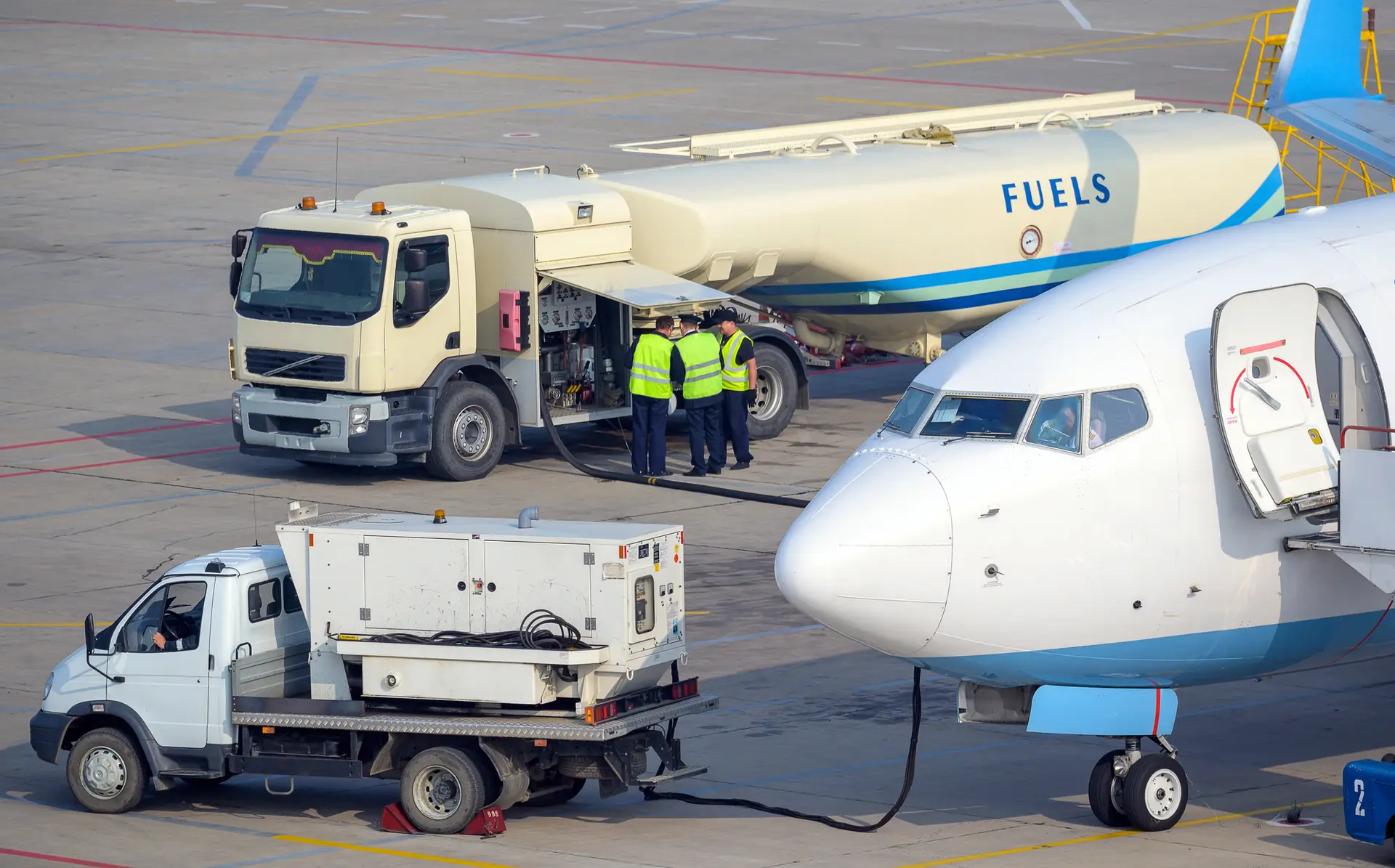Fuel Temperature Management

- aviatorpro_6714
Flying high above the earth, pilots are tasked with a myriad of responsibilities to ensure the safety and efficiency of the aircraft. One critical aspect of this is fuel temperature management. At high altitudes, fuel can become extremely cold and may even reach temperatures where it begins to wax, a condition that can severely impact engine performance. In this article, we will explore how pilots monitor and manage fuel temperature, the tools at their disposal, and why effective fuel management is essential for safe flight operations.
Understanding Fuel Temperature Management
Fuel temperature management involves keeping the aircraft’s fuel within a specific temperature range to prevent it from becoming too cold. Jet fuel has a freezing point, and if it gets too cold, it can begin to form wax crystals. These crystals can clog fuel filters and lines, disrupting the flow of fuel to the engines and potentially leading to engine failure. This makes understanding and managing fuel temperature a critical component of flight operations.
The significance of fuel temperature management extends beyond merely preventing technical failures. It also plays a role in optimizing fuel efficiency and ensuring the longevity of the aircraft’s engine systems. Given the high cost and environmental impact associated with aviation, maintaining the correct fuel temperature is also economically and ecologically beneficial. Pilots, therefore, need to be well-versed in the intricacies of fuel temperature dynamics and the methods available to control it.
The Science Behind Fuel Waxing
Waxing occurs when the temperature of the fuel drops below its freezing point, causing wax crystals to form. Different types of jet fuel have varying freezing points; however, typical commercial jet fuel, Jet A-1, has a freezing point of around -47 degrees Celsius (-52.6 degrees Fahrenheit). Once these wax crystals form, they can obstruct the fuel lines and filters, leading to reduced fuel flow and potential engine issues.
As an aircraft climbs to cruising altitude, the external air temperature drops significantly. At 35,000 feet, temperatures can plummet to as low as -57 degrees Celsius (-70.6 degrees Fahrenheit). Without proper fuel temperature management, the risk of fuel waxing increases significantly. This is why understanding the science behind fuel waxing is vital. It enables pilots to anticipate conditions that might lead to such occurrences and take preemptive measures to mitigate risks.
Pilots’ Role in Fuel Temperature Management
Pilots play a crucial role in monitoring and managing fuel temperature. They rely on sophisticated fuel management systems and perform specific actions to maintain optimal fuel flow. The importance of their role cannot be overstated, as their actions directly impact flight safety and efficiency.
Monitoring Fuel Temperature
Modern aircraft are equipped with fuel management systems that continuously monitor fuel temperature. These systems provide real-time data to pilots, allowing them to make informed decisions. Pilots are trained to watch for any signs that fuel temperature is approaching critical levels. This monitoring is not a passive activity but rather a dynamic part of flight operations that requires constant vigilance and quick response.
The ability to interpret data from these systems is a skill that pilots refine over time. They must discern normal fluctuations from critical changes, understanding the implications of each. This involves a deep comprehension of the aircraft’s fuel system and the environmental factors that can affect it. Thus, effective training and experience are essential for pilots to excel in this aspect of their responsibilities.
Adjusting Altitude and Speed
If fuel temperature approaches the danger zone, pilots can take several actions to mitigate the risk. One common method is adjusting the aircraft’s altitude. By descending to a lower altitude, where the air is warmer, pilots can help raise the fuel temperature. Alternatively, pilots may adjust the aircraft’s speed. Increasing speed can generate more friction and thus more heat, helping to warm the fuel. These adjustments require careful planning and coordination to ensure overall flight safety.
Moreover, these decisions are not made in isolation. Pilots must consider the impact of altitude and speed changes on other aspects of flight, such as fuel consumption and time schedules. The ability to balance these factors demonstrates the complexity of the pilot’s role and underscores the need for comprehensive training and situational awareness.
Collaboration with Ground Teams
In addition to in-flight measures, pilots often collaborate with ground teams to ensure proper fuel management. This includes planning flight routes that minimize exposure to extremely cold temperatures and ensuring that the aircraft is fueled with the appropriate type of fuel for the expected flight conditions. Such collaboration is vital for preemptive management of potential fuel temperature issues.
Ground teams provide pilots with critical data and support, allowing for a coordinated approach to fuel management. This collaboration extends to post-flight analyses, where data from completed flights can inform future planning and improve fuel management strategies. Therefore, effective communication and teamwork between pilots and ground personnel are key components of successful fuel temperature management.
Fuel Management Systems and Their Importance
Fuel management systems are essential for maintaining optimal fuel temperature and ensuring efficient fuel use. These systems are designed to monitor, control, and report on various aspects of fuel use, including temperature, pressure, and flow rates. They represent the technological backbone that supports pilots in their fuel management responsibilities.
Components of a Fuel Management System
A typical fuel management system includes sensors that detect temperature and pressure changes, a computer system that processes this data, and a display system that provides real-time information to the pilots. These components work together to give pilots a comprehensive understanding of the fuel system’s status. This integration of technology is crucial for effective management of fuel temperature and overall flight safety.
The sophistication of these systems continues to evolve with advancements in technology. As systems become more advanced, they offer greater precision and reliability, reducing the margin for error and enhancing overall flight safety. This technological evolution underscores the importance of ongoing training for pilots to keep pace with new developments and integrate them into their operational practices.
Benefits of Effective Fuel Management Systems
- Safety: By preventing fuel waxing, these systems play a critical role in maintaining engine performance and ensuring safe flight operations. They provide a safety net that allows pilots to focus on other aspects of flight management with confidence.
- Efficiency: Optimizing fuel temperature and flow can lead to more efficient fuel use, reducing costs and environmental impact. This efficiency is crucial in an industry where fuel expenses represent a significant portion of operational costs.
- Predictive Maintenance: Fuel management systems can also provide data that helps in predictive maintenance, identifying potential issues before they become serious problems. This proactive approach can prevent costly repairs and downtime, contributing to the overall reliability of the aircraft.
Fuel System Maintenance and Its Role in Temperature Management
Regular maintenance of the fuel system is crucial to ensure that it operates efficiently and safely. This includes checking and replacing fuel filters, inspecting fuel lines, and calibrating sensors. Maintenance practices are integral to sustaining the effectiveness of fuel temperature management systems.
Routine Inspections
Fuel system components should be regularly inspected for wear and tear. Routine inspections help identify potential problems such as leaks or blockages that could affect fuel temperature management. These inspections are part of a broader maintenance strategy aimed at ensuring the aircraft remains in optimal working condition.
Inspections are not just about identifying existing issues; they are also about preventing future problems. By maintaining a regular inspection schedule, airlines can ensure that their aircraft are always ready for safe and efficient operation. This proactive approach is essential in a high-stakes industry where safety is paramount.
Importance of Calibration
Fuel management systems rely on precise data to function correctly. Calibration of sensors and other components ensures that the data provided to pilots is accurate, enabling them to make the best decisions regarding fuel temperature management. Accurate data is the foundation upon which safe flight operations are built.
Calibration is a meticulous process that requires specialized knowledge and skills. It involves adjusting the systems to account for any discrepancies that may arise over time, ensuring that the readings are as accurate as possible. This attention to detail is essential for maintaining the reliability and accuracy of fuel management systems.
Conclusion
Fuel temperature management is a vital part of aviation safety and efficiency. Pilots, supported by advanced fuel management systems, must continually monitor and adjust fuel temperatures, especially at high altitudes, to prevent fuel from waxing and ensure the smooth operation of the aircraft. Through careful monitoring, strategic adjustments, and regular maintenance, pilots can manage fuel temperatures effectively, contributing to safer and more efficient flights.
In the ever-evolving world of aviation, advancements in technology will continue to improve fuel management systems, further enhancing the safety and efficiency of air travel. However, the role of the pilot remains indispensable, as their expertise and decision-making skills are crucial in managing fuel temperature and ensuring safe flight operations. As the aviation industry continues to grow, the collaboration between technology and human expertise will be key to addressing future challenges and maintaining high standards of safety and efficiency.



